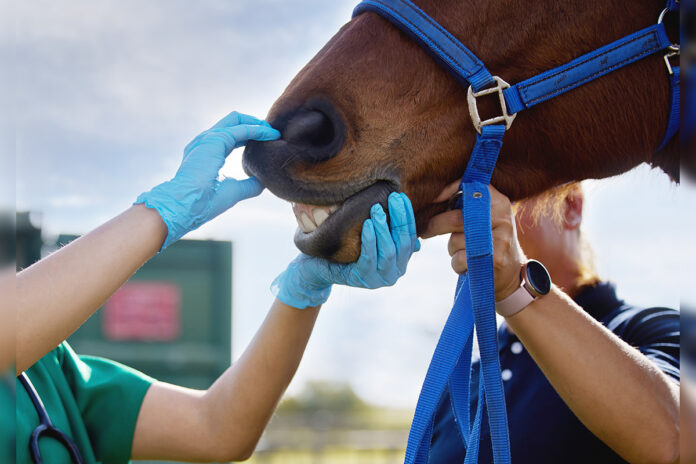MANITOULIN—Pet owners on Manitoulin Island are sounding the alarm on social media after several dogs and cats have fallen ill in recent months, with some cases now linked to blastomycosis, a potentially fatal fungal infection. This outbreak has highlighted the need for increased awareness and vigilance among pet owners in the region.
Blastomycosis is a systemic infection caused by the dimorphic fungus *Blastomyces dermatitidis*. The infection spreads through the dispersal of fungal spores found in moist, sandy, acidic soil near freshwater lakes and rivers. High organic content from decaying wood or animal waste, especially during moist, warm weather, creates an environment conducive to the growth of this fungus. Manitoulin Island, with its extensive shorelines along the Georgian Bay, is particularly vulnerable.
The spores are released into the air when the soil is disturbed by activities such as construction, removal of old logs, gardening or dismantling beaver lodges. While some documented cases suggested a link between the disease and beavers, research points more to the nutrient-rich conditions created by feces in beaver dams and lodges as the catalyst for the fungus’s growth, rather than the animals themselves.
Most often, dogs contract the disease by inhaling these airborne spores, which transform into yeast upon entering the lungs. This yeast then invades lung tissue and can spread to other organs through the blood or lymphatic systems. The disease can also manifest through primary skin lesions when spores enter through a cut or open sore. The incubation period varies from several weeks to over a month, leading to potential misdiagnosis or delayed treatment, especially if symptoms do not appear until after a pet has returned home from an affected area.
Early symptoms of blastomycosis in dogs typically include loss of appetite, shortness of breath, lethargy and coughing. Fever is present in only 40-60 percent of cases. Advanced symptoms can include skin lesions, blindness, difficulty walking, and, less commonly, kidney, prostate, joint or brain involvement. Due to its wide range of symptoms and varying incubation period, blastomycosis can be challenging to diagnose.
Veterinarians recommend immediate chest x-rays if blastomycosis is suspected, even if the dog only shows minor symptoms like lethargy or loss of appetite. Confirmation often involves cytologic tests using fine-needle aspirates from lymph nodes. However, unfamiliarity with the disease can sometimes lead to misdiagnosis as pneumonia or lung cancer. Other diagnostic methods include serological tests for antibodies, urinary antigen testing, and Polymerase Chain Reaction (PCR) testing, though these can be expensive and not always readily available.
Treatment usually involves the administration of azole antifungal medications like Itraconazole, which can take several months and cost pet owners a significant amount of money. Severe cases may require hospitalization and intravenous medication of Amphotericin B, which can have toxic side effects, though newer formulations are less damaging to the kidneys. A relapse is possible within six or more months, requiring additional treatment.
Blastomycosis is not contagious from dog to dog, dog to human, or human to dog, except in rare circumstances involving direct contact with fresh drainage from an infected pet’s skin lesion and an open cut. The primary risk comes from inhaling spores released into the air when the soil is disturbed. The fungus can remain dormant in the soil for years, only producing spores when conditions are ideal.
Larger hunting breeds such as retrievers are most susceptible, with intact males being more vulnerable than females. However, in endemic areas both male and female dogs, as well as working breeds like terriers, dachshunds, spaniels, and poodles, are at risk. Younger dogs, due to their tendency to dig and explore, may be more frequently affected.
Dr. Janice Mitchell of Island Animal Hospital has been tracking cases of blastomycosis on Manitoulin Island since 2016. While the number of cases has remained relatively stable, she notes a growing awareness among pet owners. Similarly, Dr. Carolyn Lariviere of the Walden Animal Hospital in Sudbury emphasizes the importance of early diagnosis, as the infection’s severity often dictates the prognosis. Unfortunately, the disease’s subtle and varied symptoms can result in delayed treatment, sometimes leading to tragic outcomes.
Given the increased reports of pets falling ill, area veterinarians are urging pet owners to remain vigilant, particularly when their dogs have been in areas near water or disturbed soil. Seeking immediate veterinary care if symptoms like coughing, lethargy, or loss of appetite arise can make the difference between a full recovery and a grim prognosis.
For more information, search ‘blastomycosis’ on Manitoulin.com.






